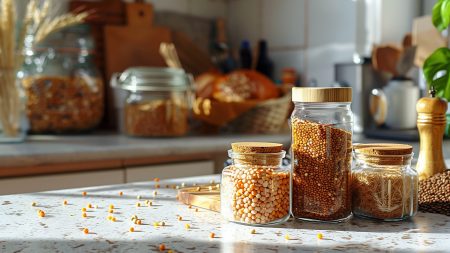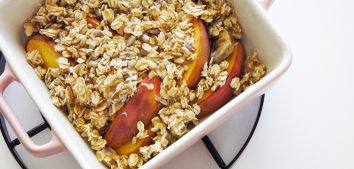
Phytic Acid – Is It Good or Bad?
Phytic acid is a compound that can be found in many plant foods. It is often classified as an anti-nutritional substance because it limits the absorption of some nutrients. Does it only have a negative impact on health? I will try to answer this question! 🙂
Phytic Acid – Occurrence and Consumption
Phytic acid is found in the largest amounts in legume seeds, cereals, pseudocereals, nuts, and seeds. You can find it in soybeans, chickpeas, lentils, beans, oats, wheat, rye, buckwheat, rice, corn, sesame. In smaller amounts, it is also present in some fruit and vegetables.
Plant-based diets (vegan or vegetarian) may be associated with approximately 5 times higher phytic acid consumption than in people who follow the so-called mixed diet (i.e. rich in meat and other animal products). This is all due to legumes, which are a valuable source of protein in plant-based diets.
The phytate content of plant foods depends on many factors, such as: cultivation method, harvest time, plant variety, as well as the degree of product processing. For example, wild rice contains significantly more phytates than white rice, because phytates are mainly found in the outer layer of the grain (the more refined the product, the lower the phytate content).

Good or Bad…?
Phytic acid forms insoluble complexes with minerals, which limits the absorption of these ingredients. These are primarily zinc, iron, and calcium. People at risk of deficiencies in these ingredients (e.g. struggling with anemia, which I wrote more about HERE) should try and reduce the intake of phytates in their diet.
However, not everything related to phytic acid is negative! Phytates are strong antioxidants. They can also have a positive effect on the glycemic index by lowering it. As a result, they are a beneficial ingredient in the meals of people who care about stable glycemia. Studies suggest that appropriate phytate consumption may reduce the risk of some cancers, limit the formation of kidney stones and reduce the formation of advanced glycation end-products (AGEs) in people with type 2 diabetes, which damage the walls of blood vessels.
How to Reduce Phytate Content?
Fortunately, there are processing techniques that can significantly reduce the phytate content of grains and legumes, and thus prevent the loss of the minerals we care about (zinc, iron, calcium). Soaking, fermentation, sprouting, and cooking are methods that activate naturally occurring phytases in plant foods—enzymes that can hydrolyze (break down) phytate.
In addition, phytic acid is soluble in an acidic environment, so it is worth adding acidic ingredients to your meals, such as apple cider vinegar dressing or lemon juice to your salad.
Phytates, though often called anti-nutritional substances, should not negatively affect nutritional status when they are part of a varied and balanced diet. There are methods by which we can limit their adverse effects. Remember that phytates do not only play a negative role, and products rich in these substances actually contain many other valuable nutrients (vegetable protein or vitamins). You just need to understand how to process them and how to incorporate them into your diet to benefit from them as much as possible 🙂
Bibliography:
- Kibil, I. (2018). Wege. Dieta roślinna w praktyce (D. Gajewska, Ed.). PZWL
- Ostrowska, J., Jeznach-Steinhagen, A. (2016). Czynniki wpływające na wartość indeksu glikemicznego oraz jego zastosowanie w leczeniu dietetycznym cukrzycy. Forum Medycyny Rodzinnej, 10(2), 84–90
- Petroski, W., Minich, D. M. (2020). Is there such a thing as “anti-nutrients”? A narrative review of perceived problematic plant compounds. Nutrients, 12(10), 2929










Comments No Comments
Join the discussion…